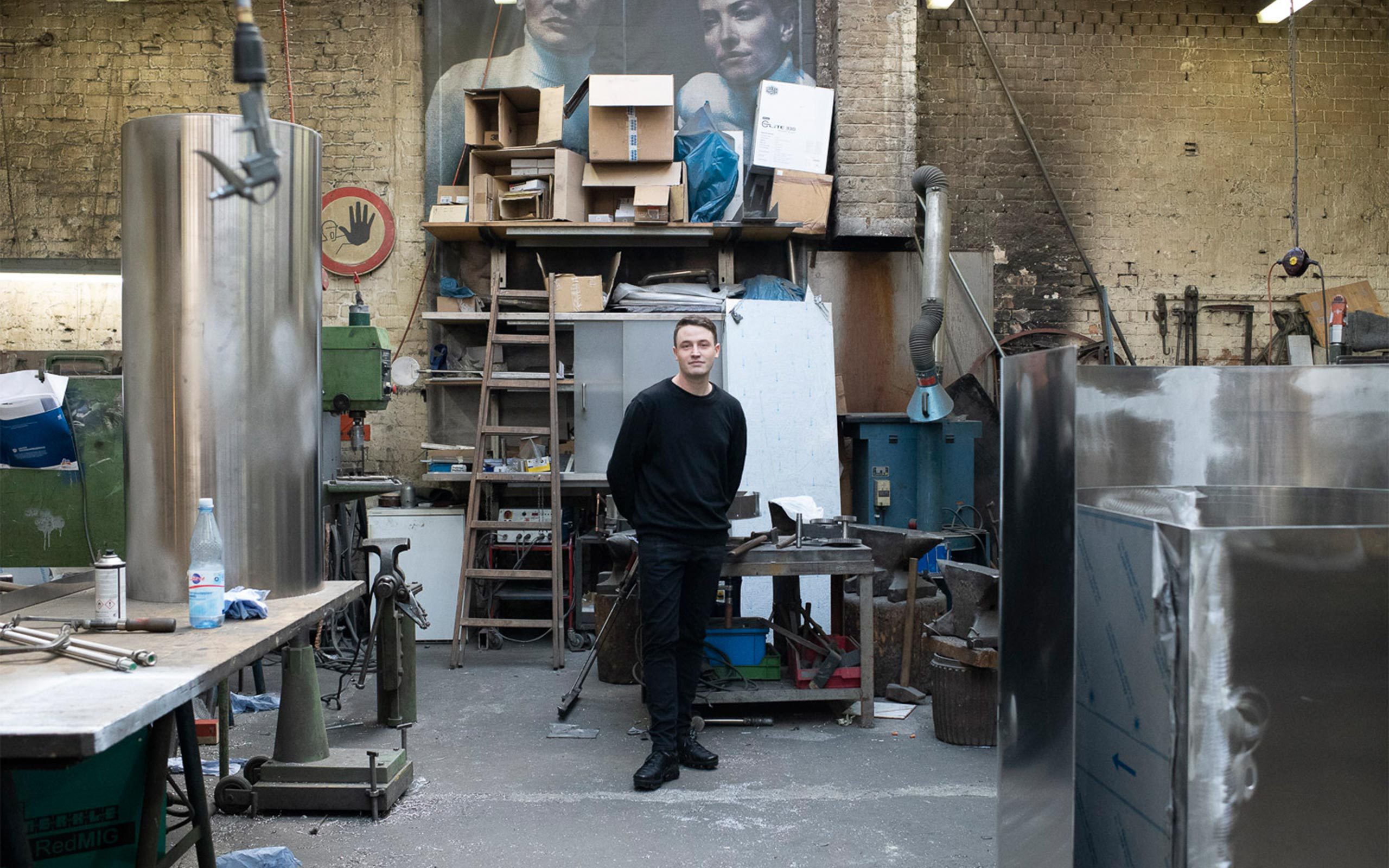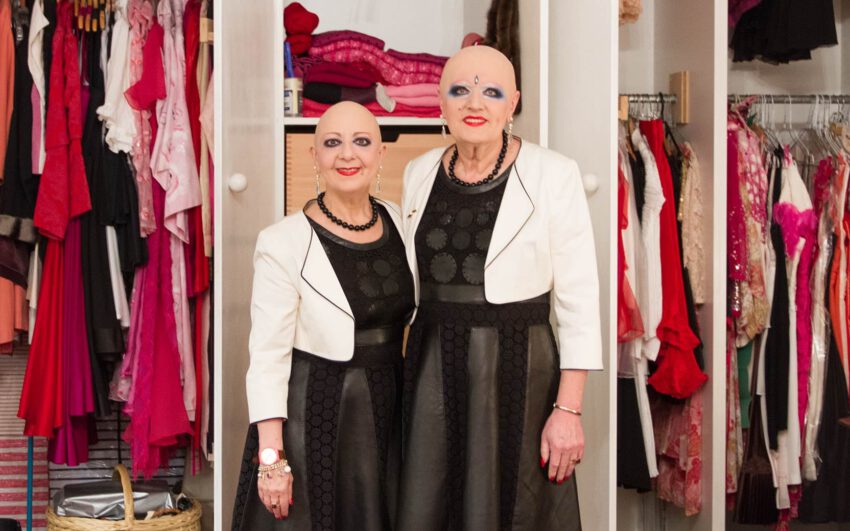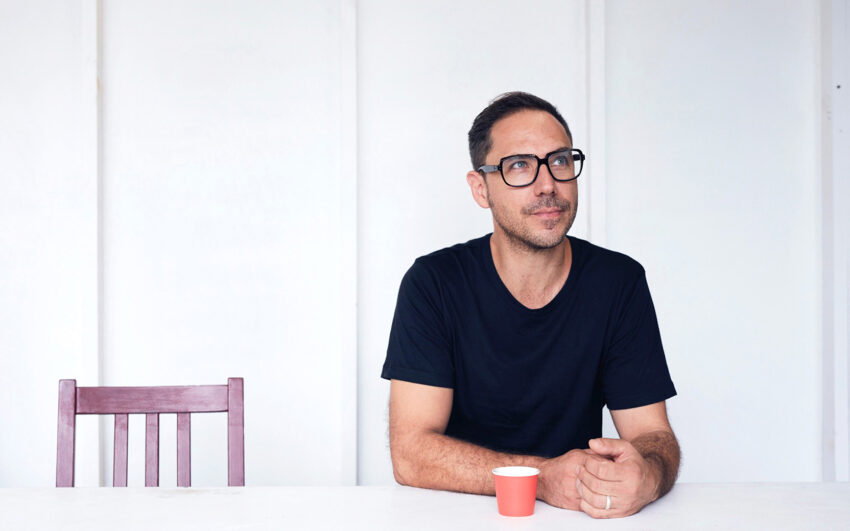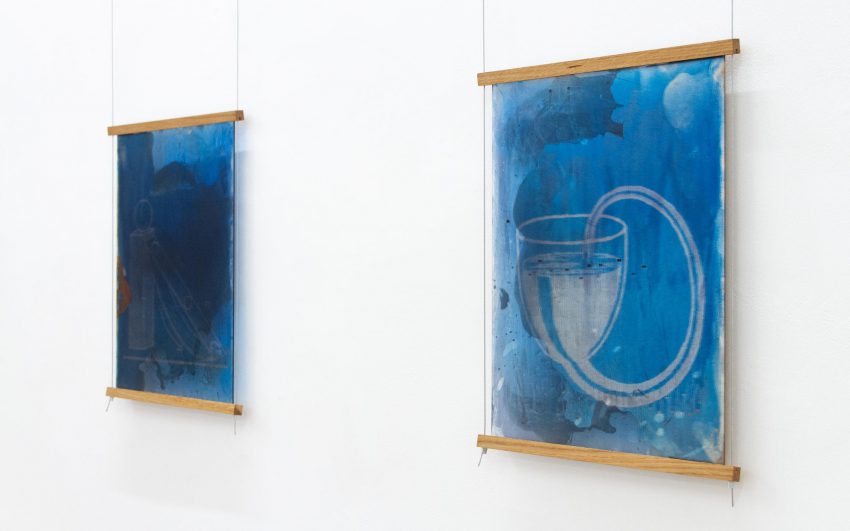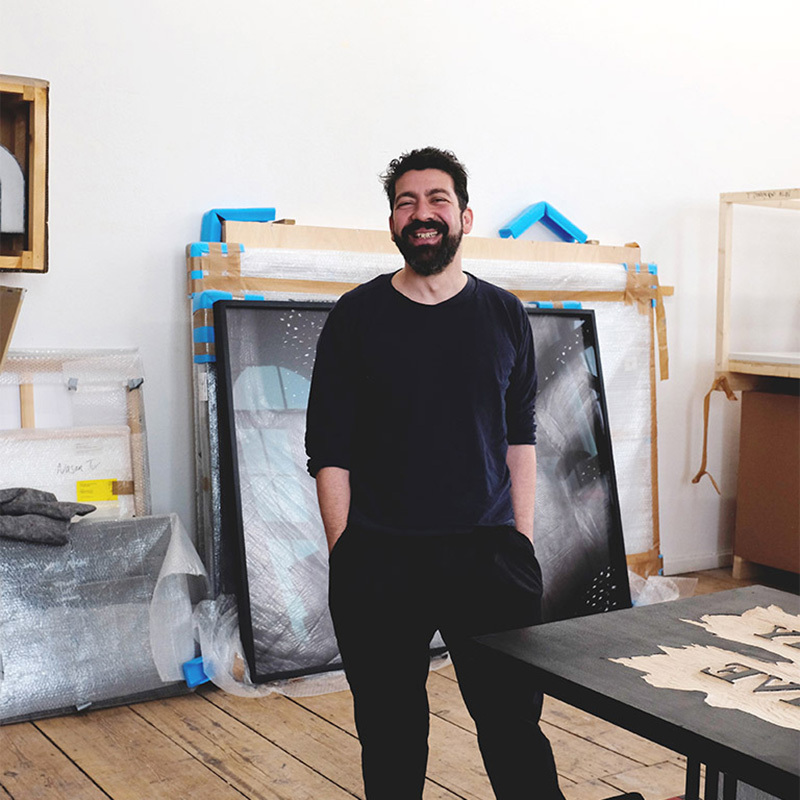Tobias Hoffknecht's sculptures are abstract presences in space which they organize and ask us how we understand it. At the same time, they are poetic statements, places of meditation, as the artist says, over whose surfaces our gaze glides until we are thrown back on ourselves. How and why Tobias Hoffknecht creates such objects, he reveals in an interview, talks about design, the Space Age and life with sculptures.
Encountering your work, one central theme immediately stands out: space. Do you have a favorite space?
Personally, I like being in my apartment. For my work large spaces are the best – but still rooms! I like walls, I like ceilings, I like floors. I like clearly defined rooms, but I also like windows. My works should stand freely, though they are not intended to stand outdoors. I find it more exciting to show my objects in closed spaces.
What is it that makes a clearly defined interior more suitable for your work than an open exterior?
There is much more going on outside, much more is happening outside. You have the sky and there is uncontrolled light. There are various backgrounds and circumstances that one is unable to influence. This means that the work is not as free as in a closed room. Maybe there just isn't as much space in my head as outside, but when I imagine my works, they are singular objects like a 3D graphic. The closed space without context fits this idea better. I'm a big fan of the often misrepresented, White Cube!
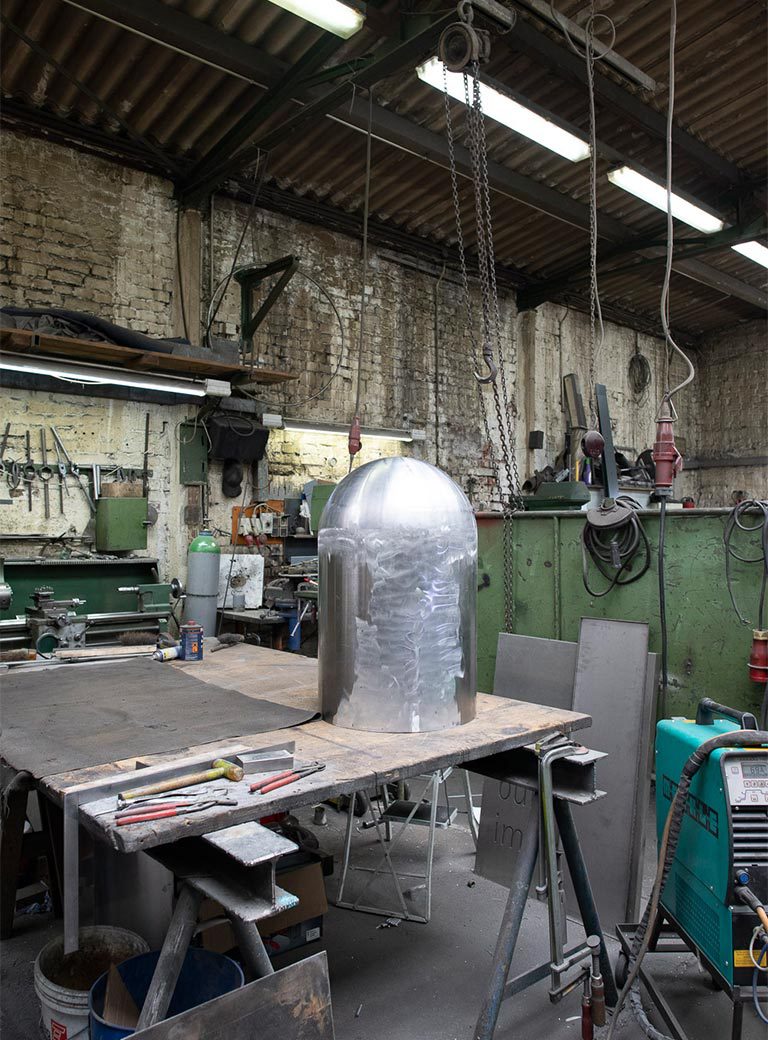
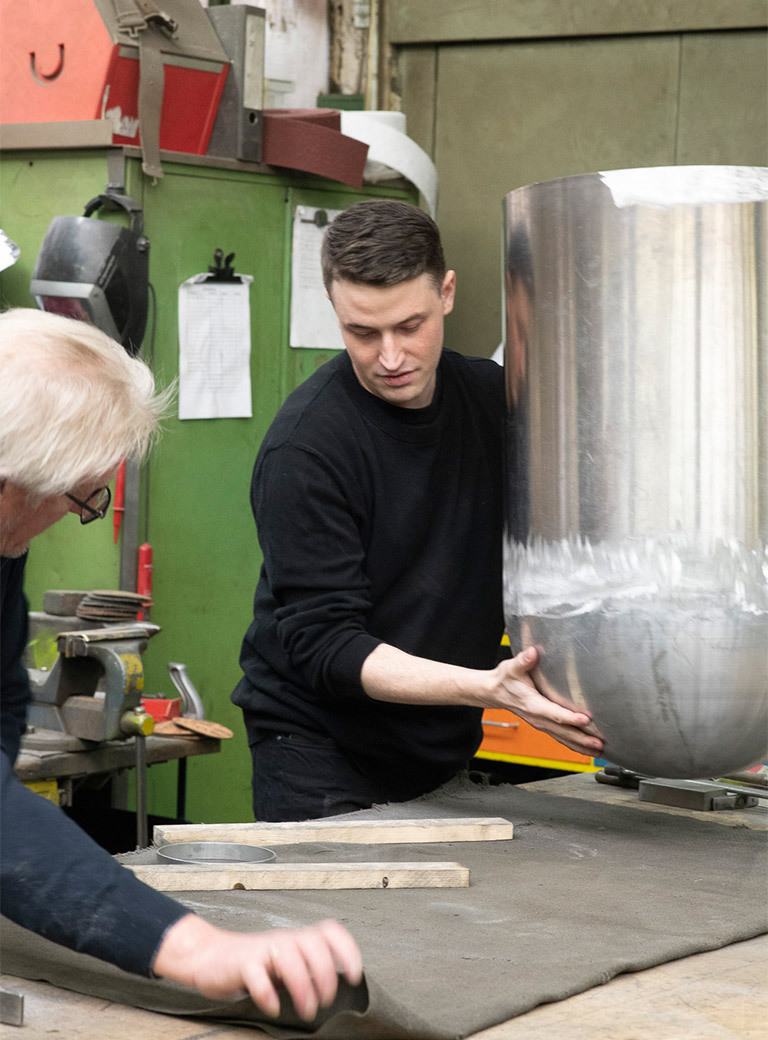
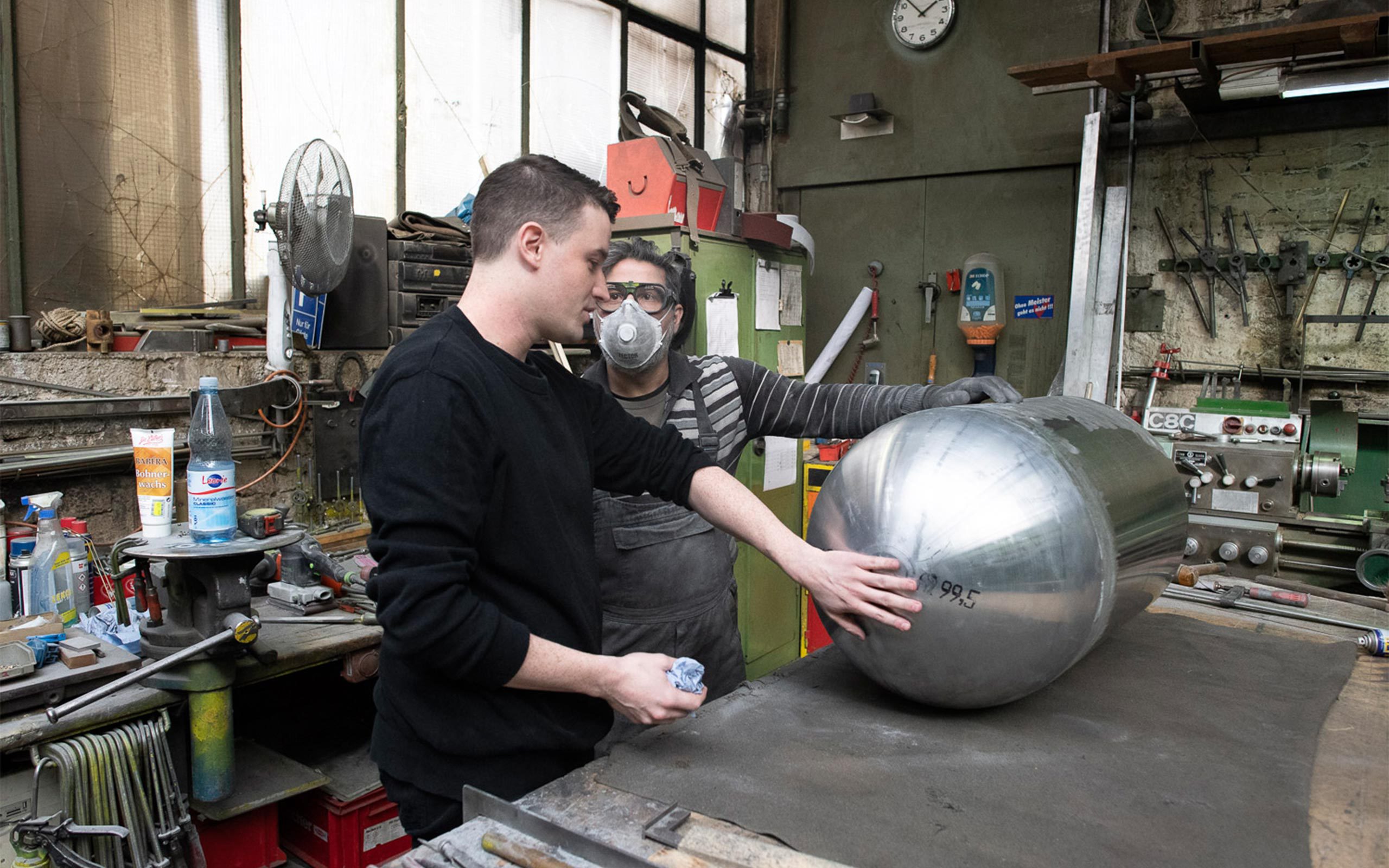
We have now talked about how space influences your work. But how in turn do your objects change the space?
Some of my works have reflective surfaces of highly polished stainless steel. In that case, the question is easy to answer: the work picks up the space through the reflective surface. But in other instances a sculpture is always a volume, a body in space. Thus, it can almost architecturally divide and structure a room. My main interest, however, is not to change perception in relation to space, but to direct full concentration on the sculpture itself by placing it in space. I use the space to release the sculpture.
Why is it so important for your work to be released/set free in this way?
You have to take time to look at them and therefore I have to create an environment where that is possible. If you leave a work alone in a room, you don't have much choice but to do that. So, I would like to ask the viewer to deal intensively with my work.
Do you have any idea how your objects are supposed to impact people who look at them in such a concentrated way?
My works don't give any information by themselves. There is no motive. That's why I think that the viewer should approach the work by himself. These are free and open spaces that everyone should fill subjectively. One is absolutely encouraged to have associations about what everyone experiences every day. The viewer is absolutely necessary. In addition, my productions mostly adhere to body measurements, so they can be experienced proportionally. So far, I haven't made any sculptures that are too small or too large for this physical reference to occur.) This leads to people using my sculptures to set down their wine glasses, or even to sit on.
One association I had in regard to your objects was the formal language of modernism, a certain rationalist element. Do you have a relationship to these buildings of thought?
I'm interested in optimism, the belief in the future and the courage exemplified in the Space Age, the Atomic Age, and later for example by Luigi Colani and Zaha Hadid. There is a will to create that I really like and that I find exciting. My works don't have the intention to convey a social agenda. I simply find the shapes of satellites and rockets and the great design ideas behind them interesting. I don't want to encourage anyone to believe in the future through my sculptures, but I think it's a pity that we're not looking toward the future these days ...
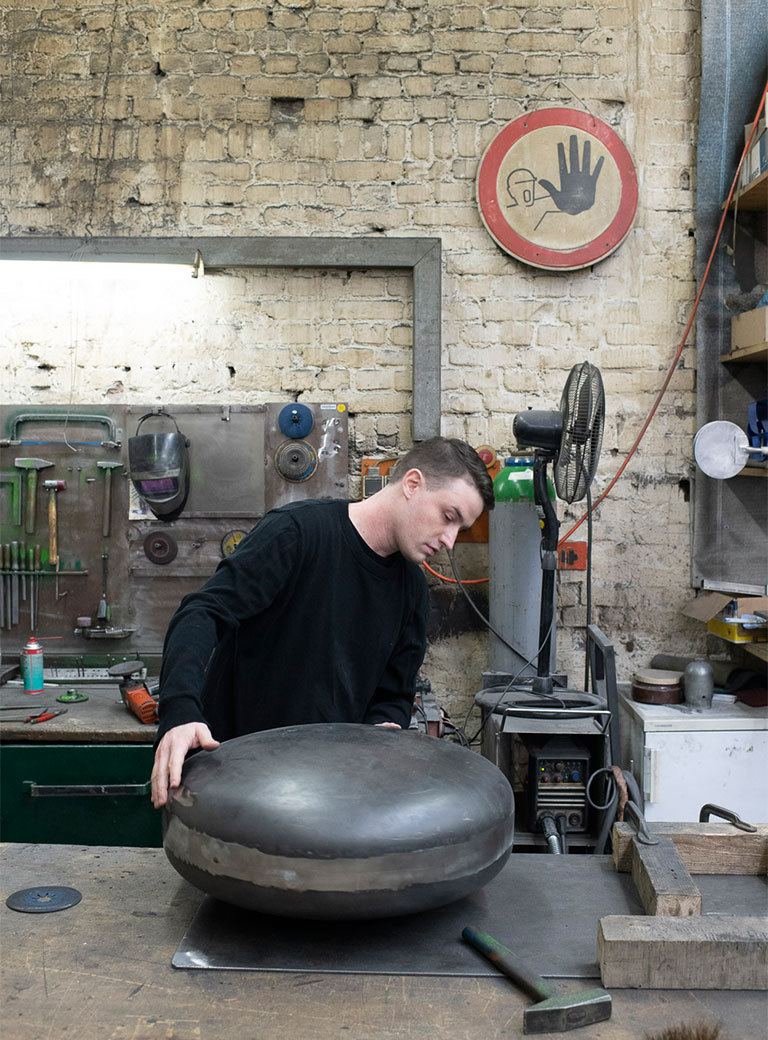
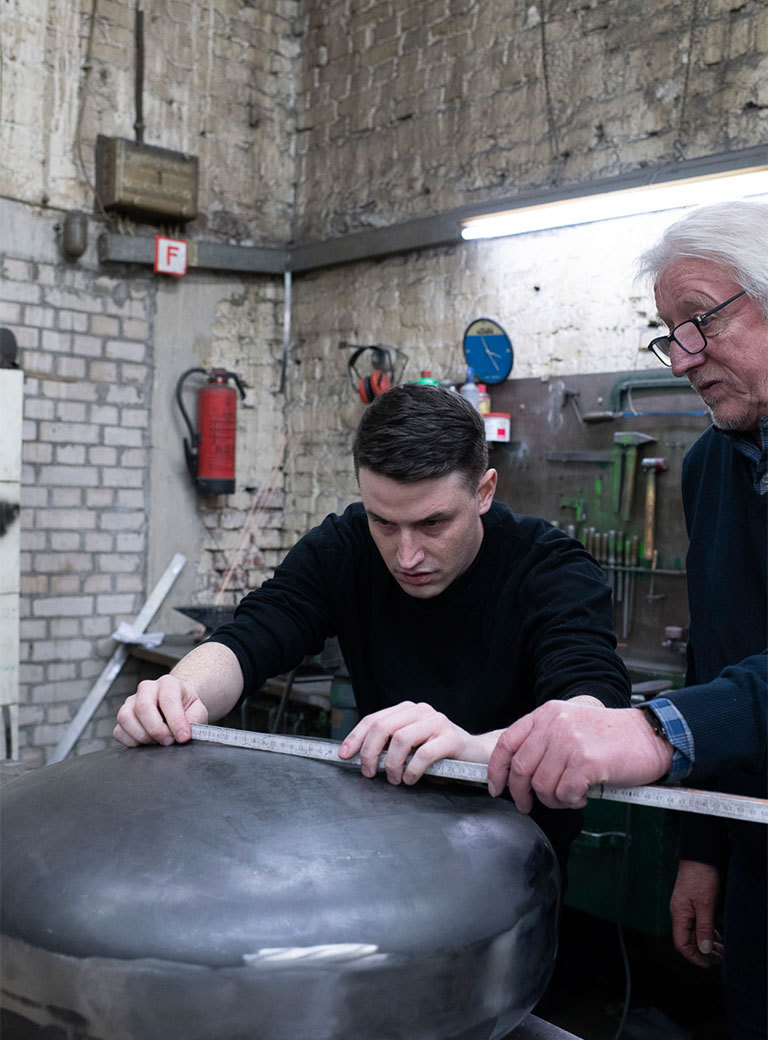
The materiality of your sculptures directly follows their formal language. What appeal do the perfectly processed industrial materials you use have for you?
Each work is the result of the previous one and so I automatically immerse myself in certain materials that have as much fascination for me as steel, stainless steel, and aluminum and the prefabricated parts made from them. I'm interested in the fact that they are industrial materials and therefore already give certain forms. For example, aluminum sheets are only three meters in size. Of course you can think bigger, but then you have to weld. It's a bit like a plug-in box system.
At the same time this means that you cannot build your own sculptures, but have to have them made.
I could certainly build them myself. Nobody stops me from training as a locksmith for example. But that's something that doesn't interest me at all. I think it's highly contemporary for an artist to have designs executed on their behalf. It can be very difficult to find a craftsman who is willing or able to become involved in something like this, but fortunately, I have a very experienced workshop here in Dűsseldorf and sometimes I work with craftsmen in Berlin and Italy; the craftsmen there understand me well and do a much better job than I could ever do.
What does your process look like in concrete terms from the first idea to the installation in the exhibition space?
The manufacturing processes with the materials I work with are so elaborate that I can only realize a small part of what I imagine. In this respect, when I have an exhibition, I make use of the sketch collection that piles up at my place. Then I think about what suits the room, how I can combine the works, and which set I want at the end. If they are old sketches, I often adapt them. Then I commission this selection. That works well if you explain exactly what you want and remain involved throughout the production process. When designing the exhibition, it's very important to me that it's not just a series of works, but that the exhibition functions as a space. In this way, the exhibition itself becomes an installation and is thus actually its own work.
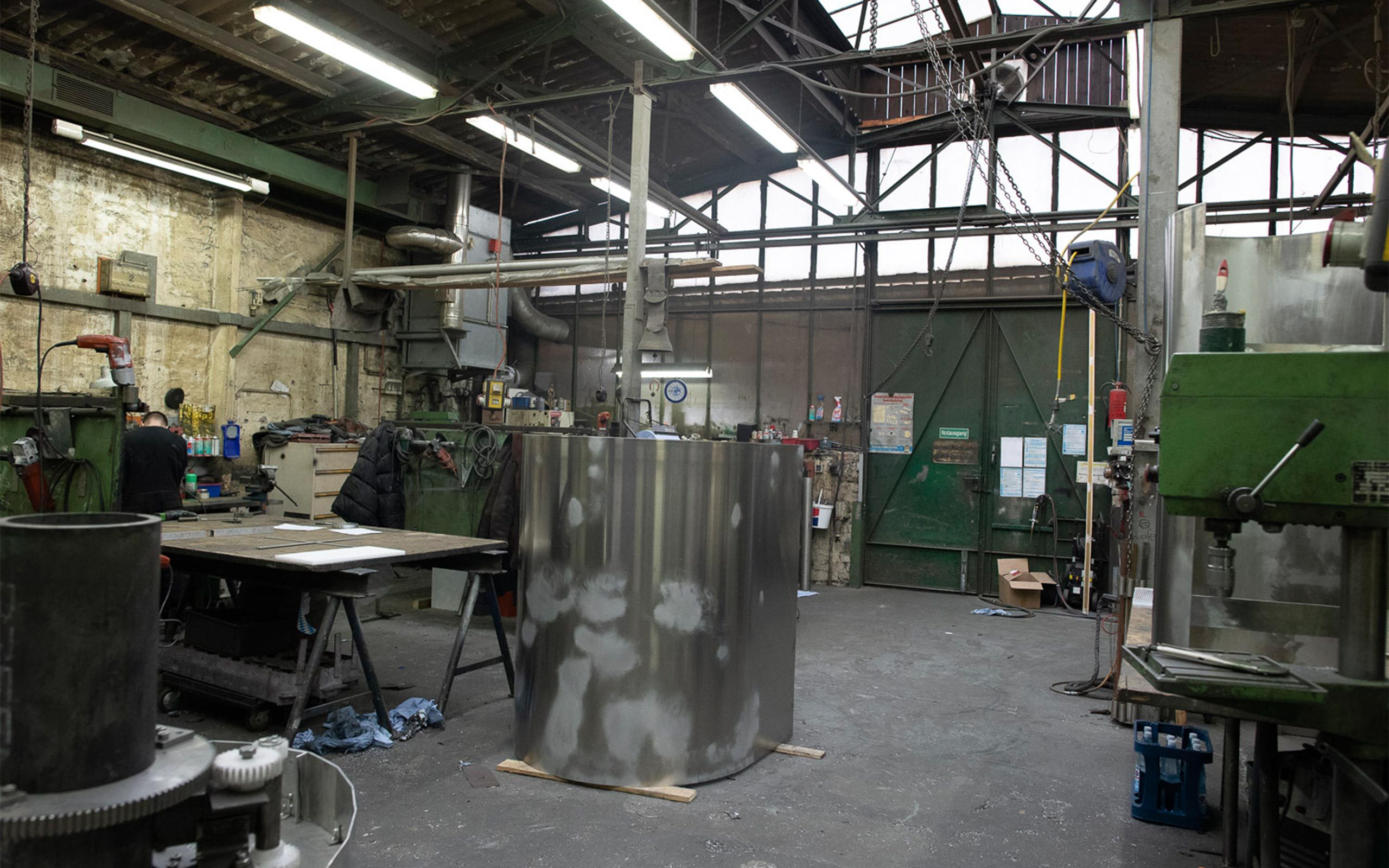
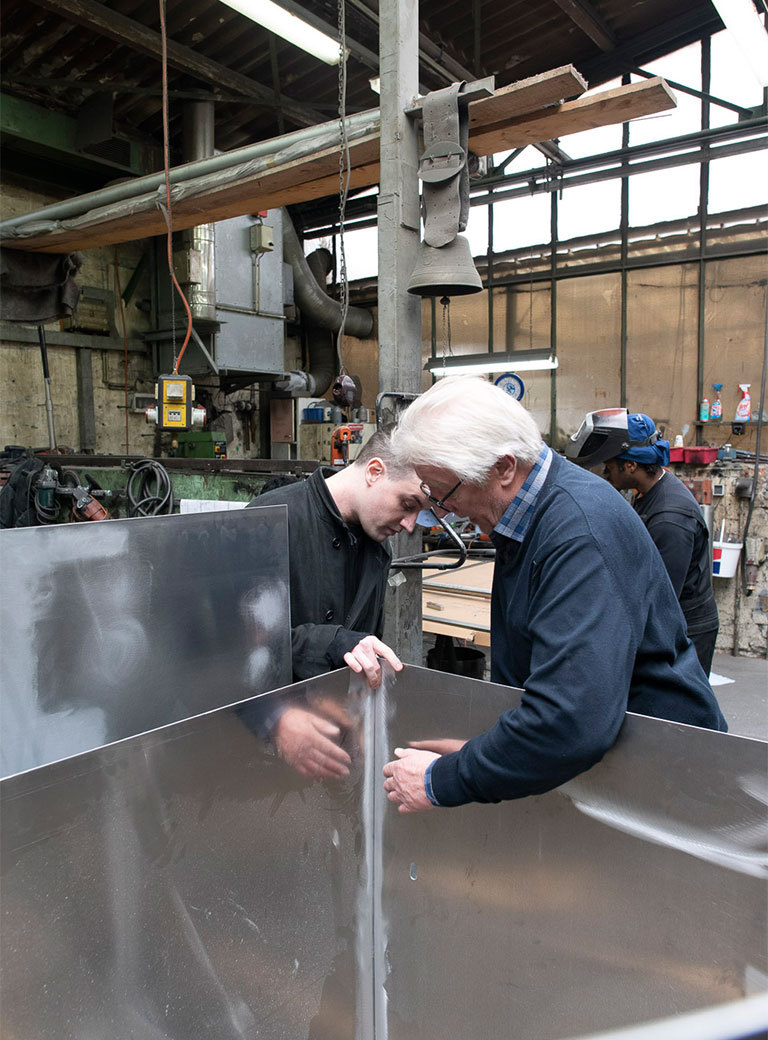
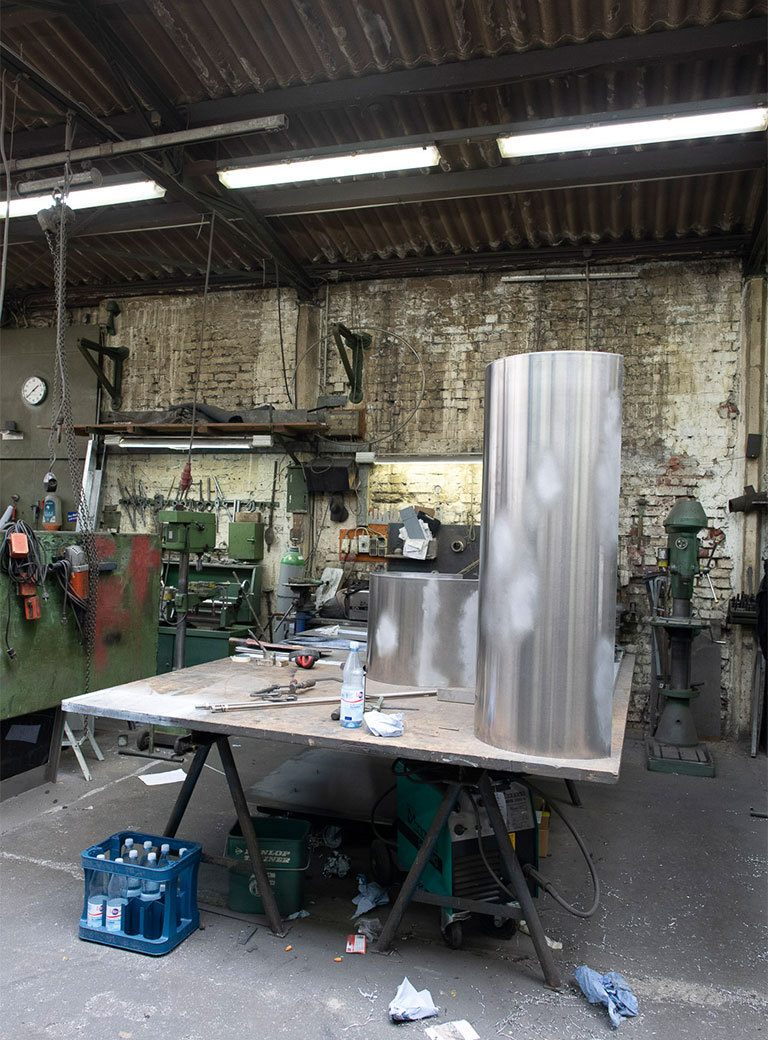
Your studio will not look like an artist's studio, but rather like a design office.
That's what it would look like. But I don't have a studio at all. I work at my kitchen table and in my living room. At the moment that is absolutely enough for me. Above all, I need a lot of paper and time. Because if you're not involved in the production process itself, you have to think about exactly what you want beforehand. Once the work has been executed, it's just there, in the world. This preparation is my main work.
As you describe your process, one can't help but think of similarities to the way designers work. What points of contact do you see between your artistic work and the design of everyday objects?
If you believe in the future, you want to shape it. There's a lot of great architecture that wants just that. That's how an ambition is set in the world. For me this is a formulation of the claim that something brings society forward by being there. Art, on the other hand, is an end in itself and that already makes the statement that it has no functional use. For me, works of art are more like places for meditation. They may not be usable in that sense, but of course art is still purposeful. A sculpture is a formulation on my part. It can be seen, read and interpreted. That is its function.
Have you ever considered an artistic expression other than working sculpturally in space?
I actually started studying graphics, but I quickly realized that sculpture fascinated me more. An object is in space, while graphics and painting remain on the wall. Still, it wasn't a quick process to get to the way I'm working now. One thing that makes art interesting for me is that artists create their oeuvre over time and thus develop a formal language. I find this development more exciting than individual masterpieces. For me, this path led me through design furniture and installation works. In the end, I dared to take the step of producing completely function-free objects. The current body of work is based on this.
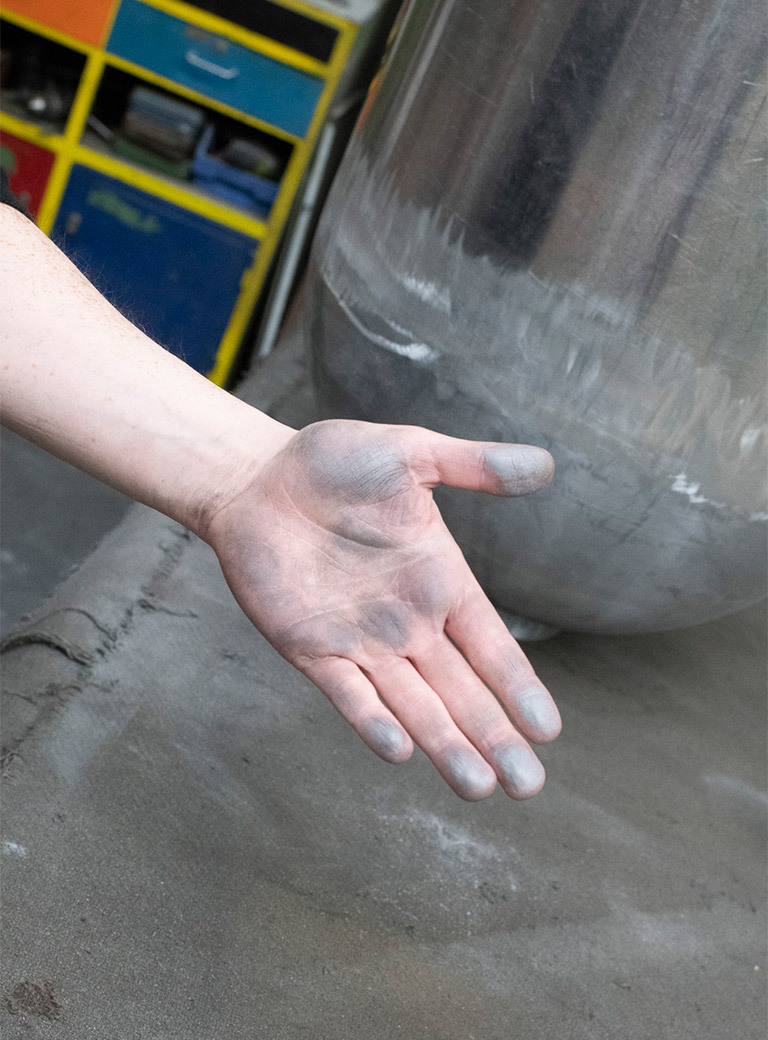
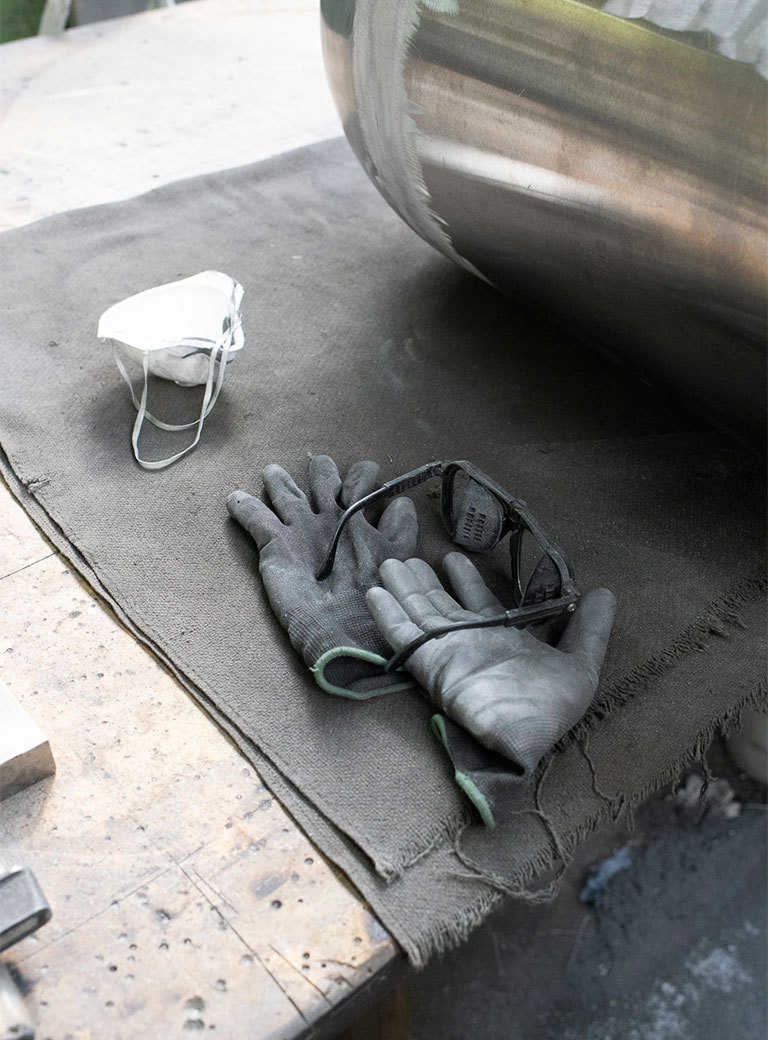
And if you wanted to be an artist at all, was that ever in question?
For me, nothing else ever came into question during the phase when you're concerned with what you finally want to do with your life. I had no idea what it actually meant to be an artist, but it was clear to me that that's what it had to be. I knew: I want to explore it and that is what I am still involved with.
Do you have inspiring personalities, heroes, role models who have accompanied you along this path and have been decisive for your work?
Certainly. I think many things influence us. I am very impressed when I notice a great will to bring an idea into the world and to make something happen, as with for example such designers as Zaha Hadid and Luigi Colani, and artists like Richard Serra, Gordon Matta Clark, Walter de Maris, and Bruno Gironcoli; the list could go on.
If your works unfold their full effect in this quasi-virtual space, isn't it a challenge when a collector wants to install them at home?
It's certainly not easy to hang or place one of my sculptures in a private context. I know that too, but I think it's great if someone dares. That gives the work the chance to reorient itself by making reference to the new environment. My works are independent and I think they can work in any room. Recently someone in Italy hung a work of mine over a great Sottsass table. In such a context my sculpture really works as art and not just as a wall decoration.
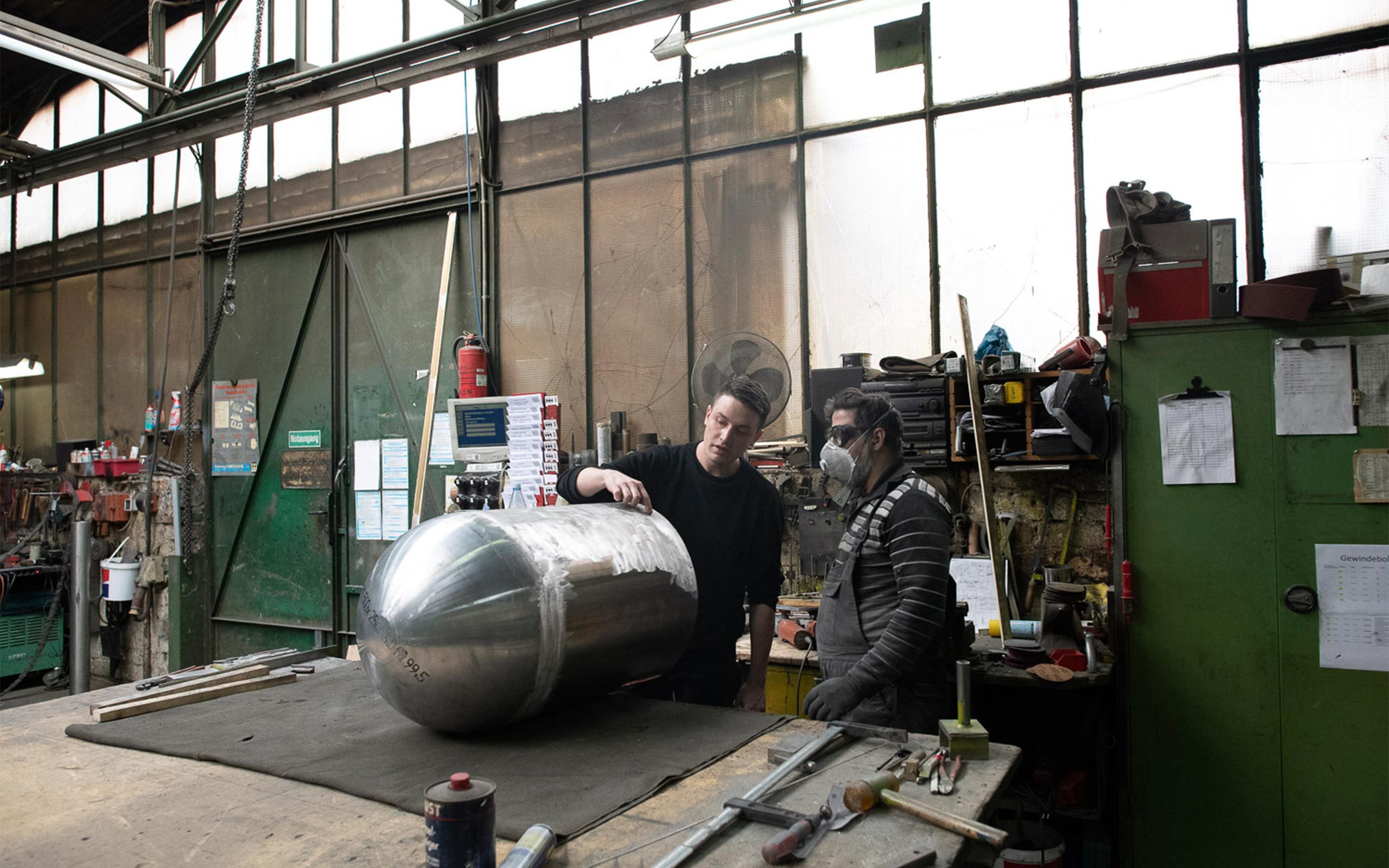
What advice would you give to people who are considering buying a sculptural work, but who may not yet have the courage to do so?
It's a bit easier with wall works. That's why as a sculptor you always try to make works for the wall somehow. Even larger works have more room there. In the case of actually freestanding sculptures, you probably just have to orientate yourself around the object with the interior. That's just a question of conviction. I would do that immediately! I would love to live with a sculpture by Absalon or Thomas Schütte, for example, or by the Berlin sculptor Hiroshi McDonald Mori: He makes great sculptures in the format of a coffee table that you should actually use. Compared to a normal interior, you stumble across something like this – and it keeps you awake.
As a sculpturally working artist, are you perhaps sometimes envious of painters who have it easier in bringing their works out into the world?
The process of painting is a very different one. Of course, painters can act much more independently. They can produce much faster and also make greater progress in formulating their own oeuvre. As a sculptor, the realization of a single work and the inference from it to the next works is definitely more laborious. On the other hand, this effort means that one has to deal more intensively with one's own work. Both situations have advantages, so I wouldn't speak of envy. It's certainly very satisfying to be a painter, but it's also great to be a sculptor!
Do you have a piece of advice for future sculptors that would help them to walk this arduous path?
If that’s what you want and then do it. You have to be very diligent, very patient and never give up –if it's important to you. But then, you would already know that!
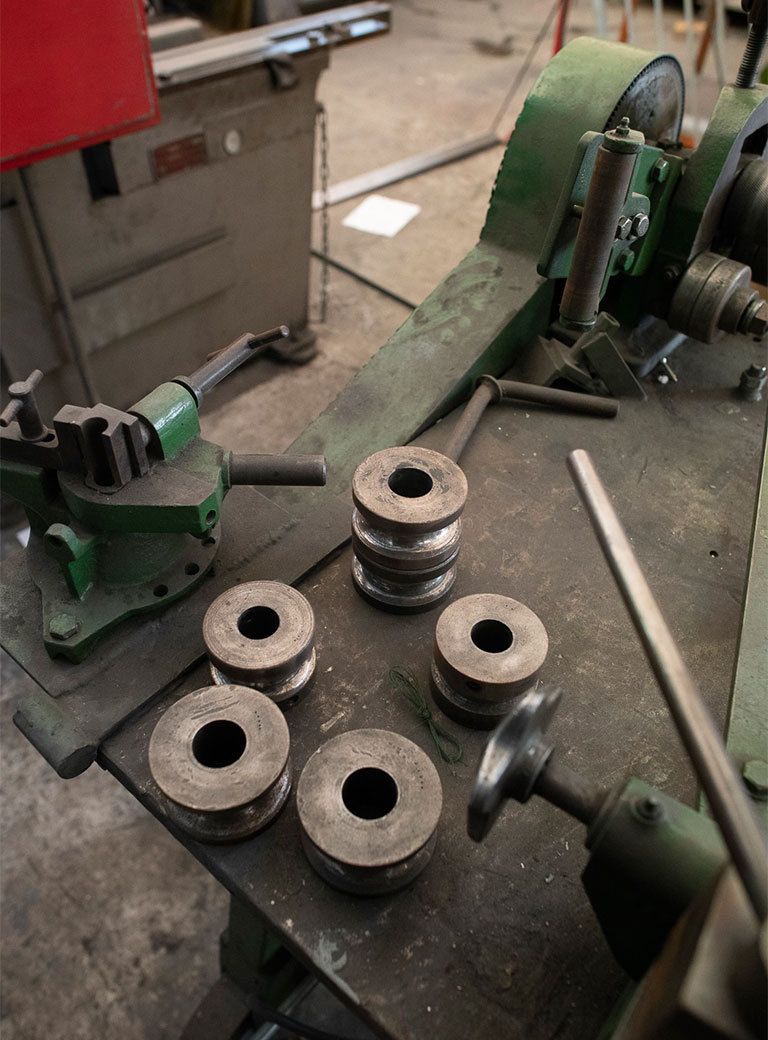
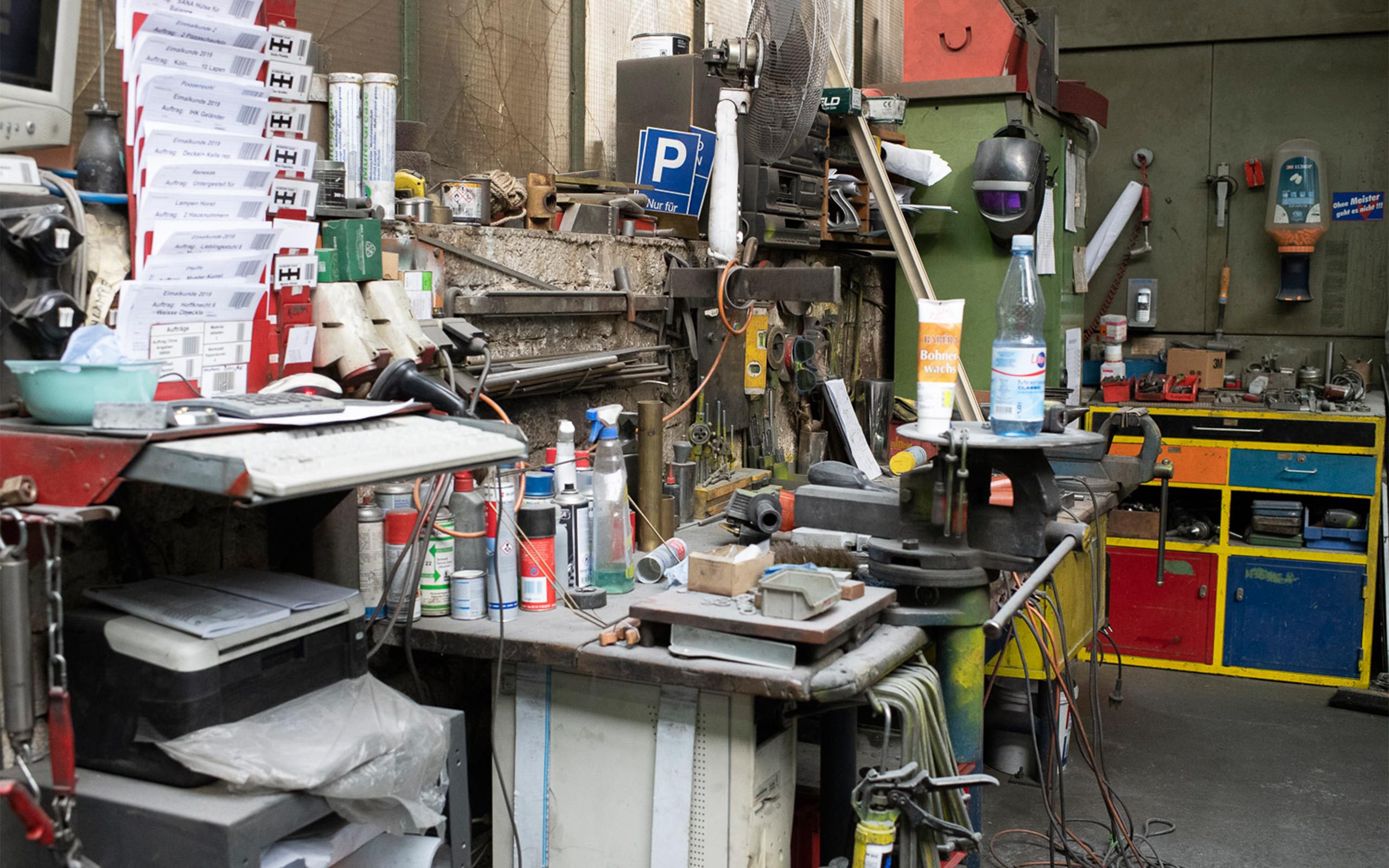
You talked about how an artist's work gradually evolves from work to work. Are you already thinking about which themes and forms will interest you next?
I’d say I don't have any themes! That's why I'd rather deny the narrative in my oeuvre for myself. In any case, an idea becomes clear. The next one results from what comes now. I think I'm at a very good point right now and can realize many works. At the moment, I'm very much interested in large volumes and curves, in white instead of polished – also a beautiful non-color. In this area there is a lot that I still want to do. At the same time, there are still many sketches for polished work that I urgently want to do.
There is one narrative element in many of your works: the title.
Where do the partly very expressive names of your sculptures derive from?
The titles come about when I have a specific title idea for a concrete work. I don't try to give information for an interpretation that I might have or a predetermined interpretation through the titles. But sometimes I feel the need to add something to the work, not because it’s absolutely necessary, but simply as a little poetry. An example would be Warm but Hungry. For me this describes the feeling of being already well on the way, but still wanting more. Since my last exhibition in Italy, I've also started numbering my works from 200 down. Let's see how far I can get.
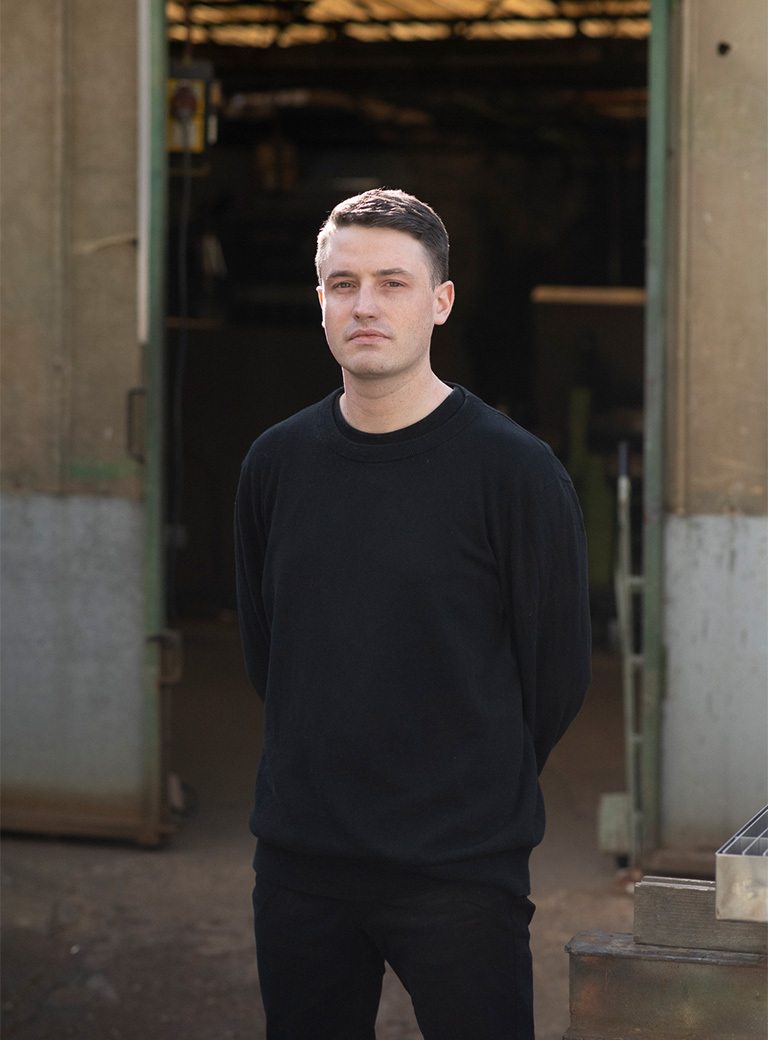
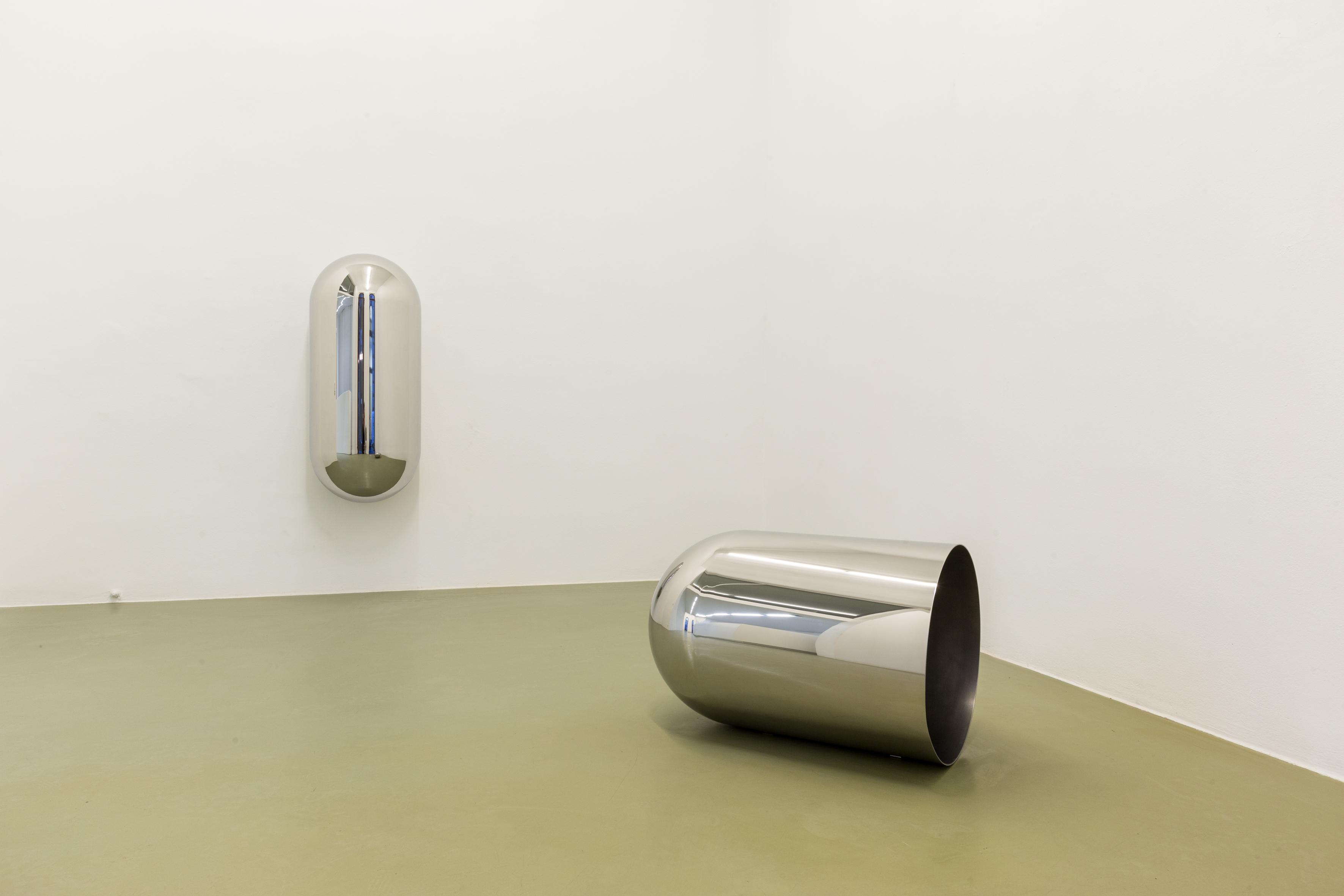
Tick (links), Immature Drop (rechts), 2018
Foto: Lukas Dostal
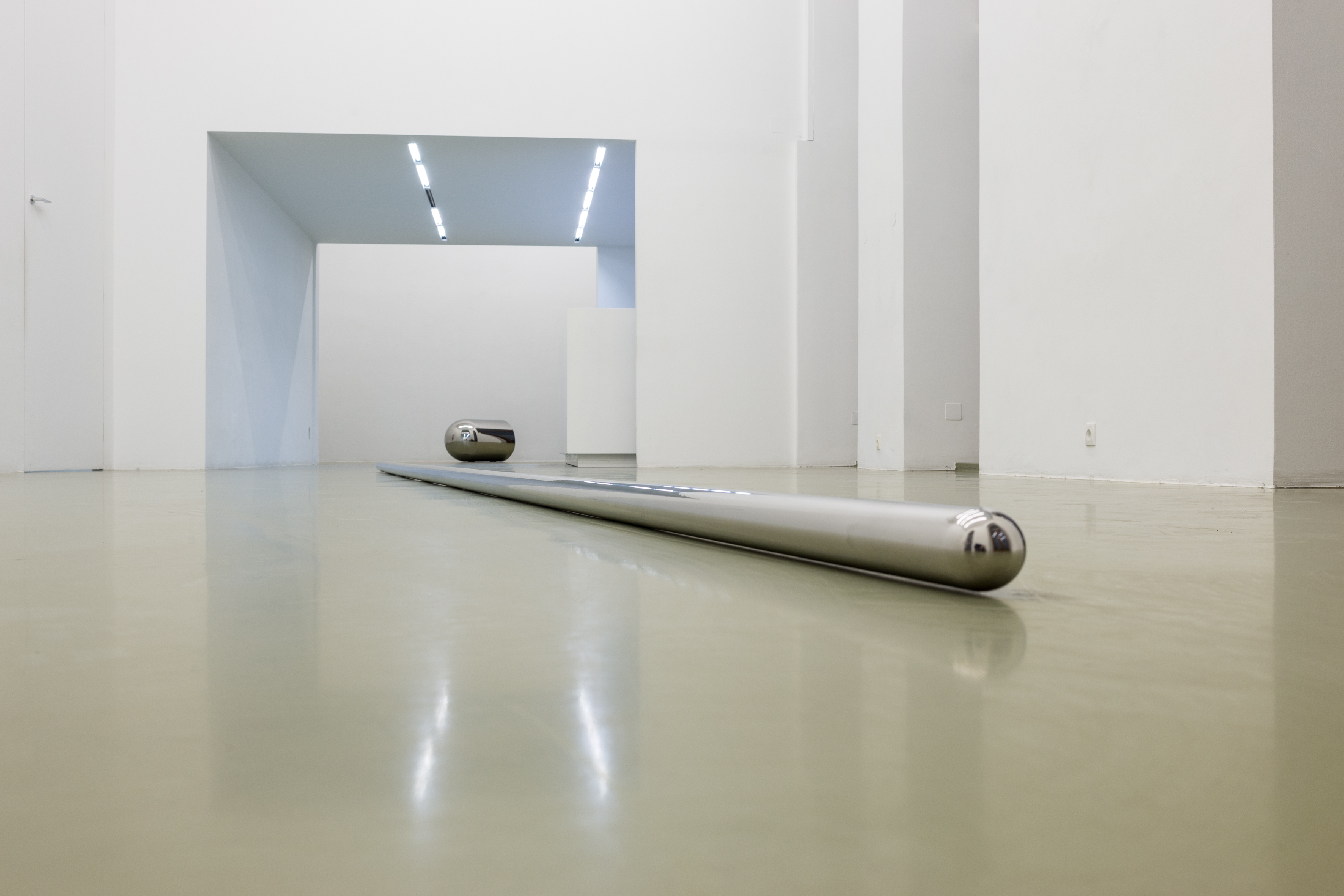
Fin de siècle, 2018
Foto: Lukas Dostal
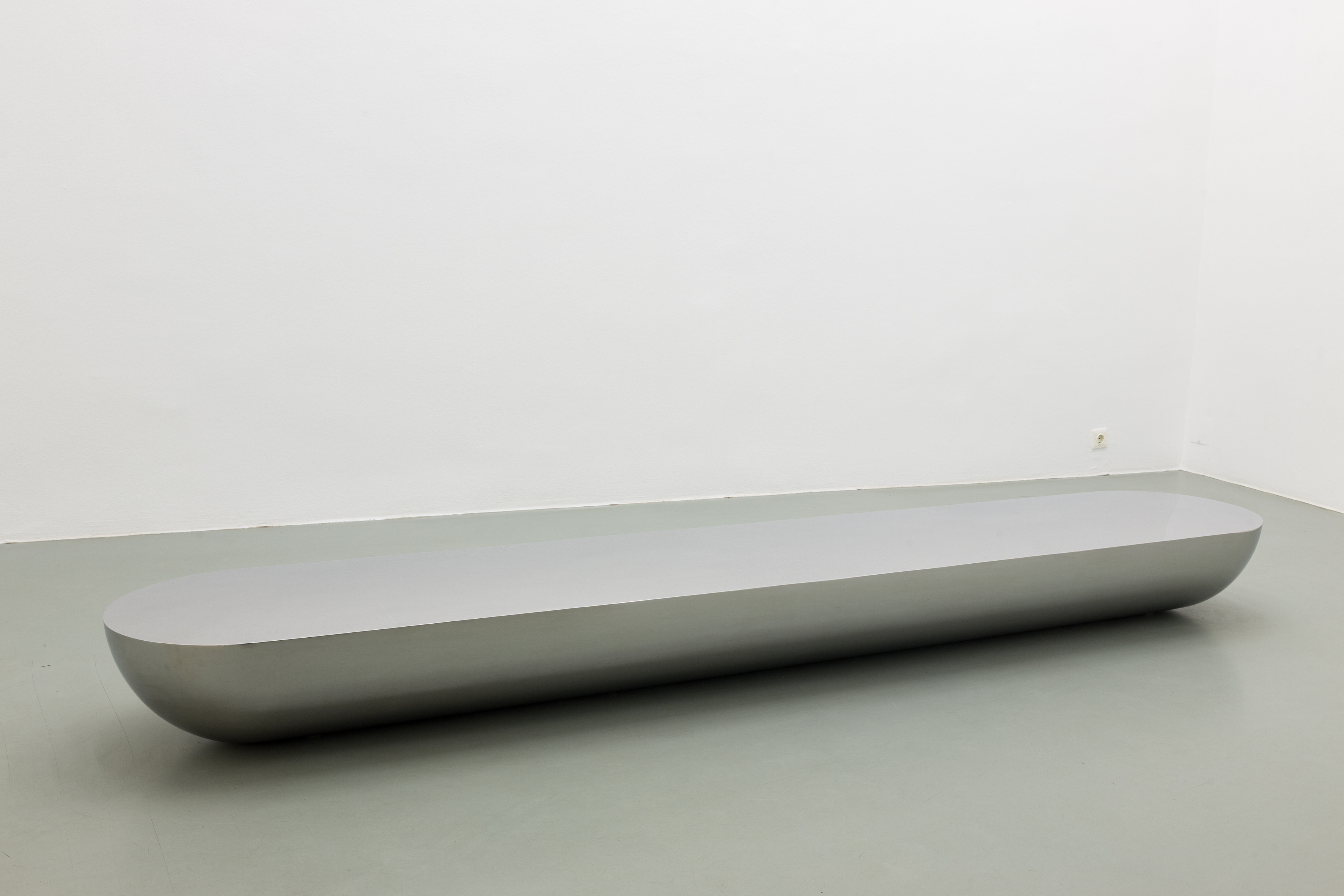
Warm but hungry, 2018
Foto: Lukas Dostal
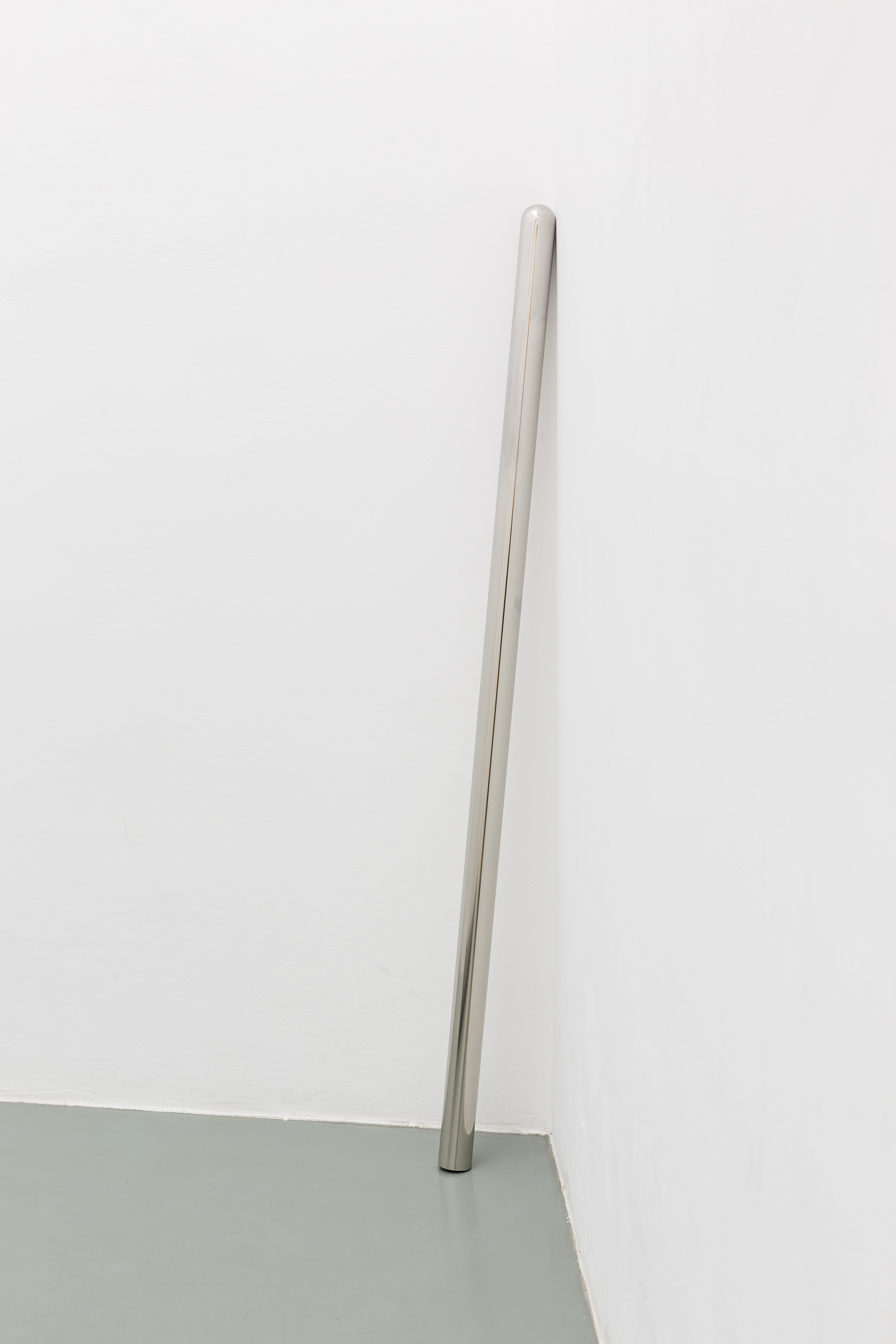
Drilling, 2018
Foto: Lukas Dostal


